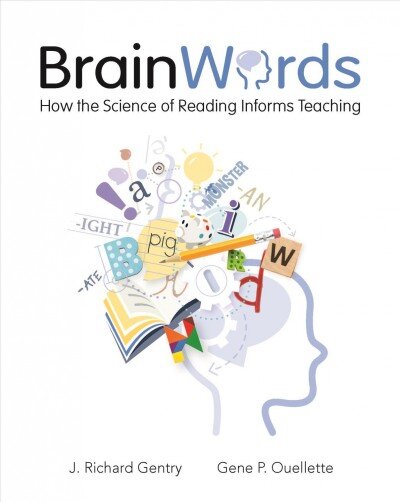Gentry, an educational consultant, author, and former elementary teacher, professor, and director of a university reading center, and Ouellette, a professor of psychology and researcher in reading, spelling, and the connections between oral and written language, explain the science behind learning to read and the brain development that supports it, detailing reading theory, research, and neurological reading circuitry in relation to classroom instruction. They show teachers how to rethink reading instruction and word study as a more effective way to build dictionaries in the brain where students can store and automatically access sounds, spellings, and meanings for correctly spelled words, connecting to other reading circuitry in the brain for meaning and understanding, and resulting in more proficient reading and writing. They outline a spell-to-read approach for teaching reading that is based on developmental reading theory, research, and brain study and presenting words aurally first and then asking students to analyze the sounds they hear and spell the word how they hear it. They describe the scientific study of reading and how it can inform teaching, what is known about how reading works in the brain, current teaching practices and what works and what doesn't, the importance of being aware of developmental phases in teaching reading and spelling, the spell-to read instructional method in kindergarten and first grade, building brain-based representations of words in second through sixth grade, and understanding and supporting children with dyslexia in terms of reading science. Annotation ©2019 Ringgold, Inc., Portland, OR (protoview.com)
“Gentry and Ouellette are cannonballing into the reading research pool, they’re making waves, and these waves are moving the field of reading forward.” --From the foreword by Mark Weakland, Super Spellers The past two decades have brought giant leaps in our understanding of how the brain works. But these discoveries—and all their exciting implications—have yet to make their way into most classrooms. With the concise and readable BrainWords, you will learn how children’s brains develop as they become readers and discover ways you can take concrete steps to promote this critical developmental passage. Introducing their original, research-based framework of “brain words”—dictionaries in the brain where students store and automatically access sounds, spellings, and meanings—the authors offer a wealth of information that will transform your thinking and practice: Up-to-date knowledge about reading and neurological circuitry, including evidence that spelling is at the core of the reading brainTools to recognize what works, what doesn’t, and whyPractical classroom activities for daily teaching and student assessmentInsights about what brain research tells us about whole language and phonics-first movementsDeepened understanding of dyslexia through the enhanced lens of brain science With the insights and strategies of BrainWords, you can meet your students where they are and ensure that more of them read well, think well, and write well.
